Bird Feeders
Bird Food
Hardware
Nesting
Birds
Activities
Bird Feeding Solutions
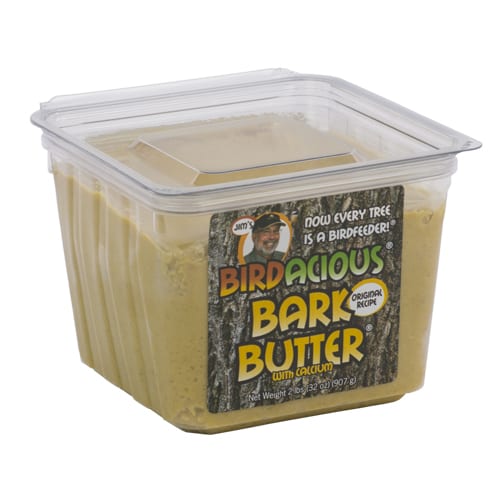
Jim’s Birdacious® Bark Butter® has been improved with added calcium!
No bird food attracts more species of birds than Jim’s Birdacious® Bark Butter®. Created by Jim Carpenter, founder of Wild Birds Unlimited, it’s is a spreadable suet that can be easily smeared on tree bark or a feeder to attract birds such as chickadees, nuthatches, catbirds, cardinals, mockingbirds, wrens, woodpeckers, towhees, Brown Creepers, grosbeaks, robins and more. This exclusive food option is made from suet, peanut butter and corn for a high energy treat your birds will love.
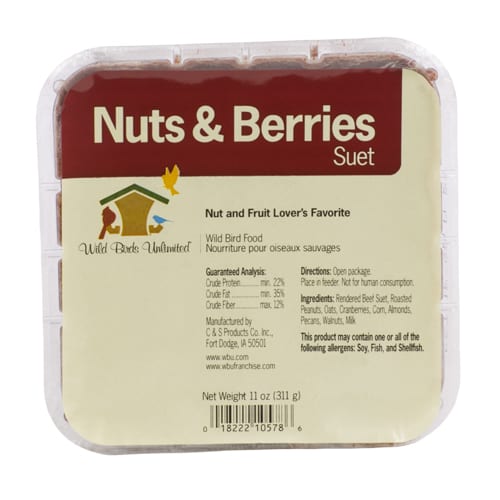
Dimensions: 4-7/8″ x 4-7/8″ x 1-1/3″
With our Nuts & Berries Suet, it’s easy to provide your birds an extra energy boost. Loaded with peanuts, almonds, pecans and cranberries, Nuts & Berries is designed to attract suet- and fruit-eating birds like woodpeckers, chickadees, titmice, nuthatches, wrens and more. All of our suets are rendered and refined to remove impurities that cause spoilage.
Avoid the mess of melted suet. Offer No-melt suet dough when seasonal temperatures are above 95º F and Suet when temperatures are below 95ºF. All of our Suet and No-melt dough is rendered and refined to remove impurities that cause spoilage. No-melt dough is designed to withstand temperatures up to 130° F.
Offering suet at a backyard feeding station is a great way to attract a wide variety of insect-eating birds. Birds that eat suet will still find natural food sources such as insects, insect eggs and grubs to get a well-rounded diet.
Since suet can be messy to put into the cages, try freezing the suet before putting it in the feeder. This will make the cake contract, allowing it to fit in the cage more easily and reduce waste.
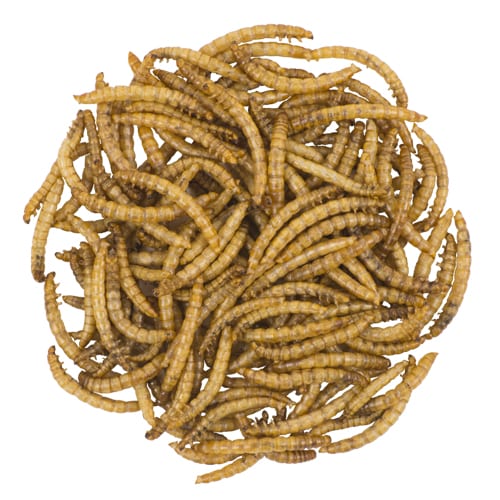
Mealworms are the larvae of the beetle Tenebrio molitor. Birds such as chickadees, bluebirds, wrens and woodpeckers will eat mealworms, if they are placed in a feeder accessible to the birds. Because mealworms can crawl, it is best to place them in a feeder where they cannot crawl out.
Mealworms can be kept for weeks at 40 – 50° F. For longer storage they should be placed in bran flakes, wheat bran or corn meal in a container having air holes. A potato or apple slice should be kept in the container for the worms to use as a moisture source.
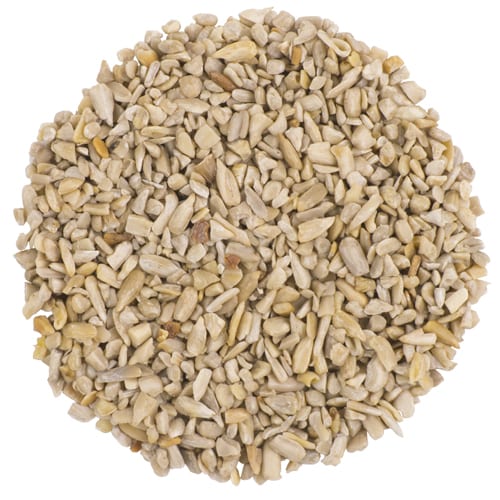
Hulled Sunflower is birds’ favorite food but without the mess of shell debris.
Get more birds for your bucks by offering sunflower seeds without their shells. No shells means no mess under your feeder. Hulled sunflower seeds have a high oil content and provide birds with an extra kick of energy. It’s an ideal seed to offer in feeders near patios, sidewalks or balconies. Offering hulled sunflower is also cost efficient, because you’re not paying for the shells that are not consumed.

Capacity: 1 cake
Dimensions: 18¾” x 8″ x 3″
The EcoTough® Tail Prop Suet Feeder lets birds eat in a natural way. The paddle simulates a tree trunk and offers birds a place to prop their tail while they feed. Our feeder holds one suet cake, is easy to fill and hangs anywhere.
EcoTough feeders and houses are environmentally friendly, high quality products that are made from recycled plastic, keeping used plastics from making their way into our landfills. EcoTough feeders and houses won’t rot, crack, fade or warp like wood can.
(Bird food not included.)
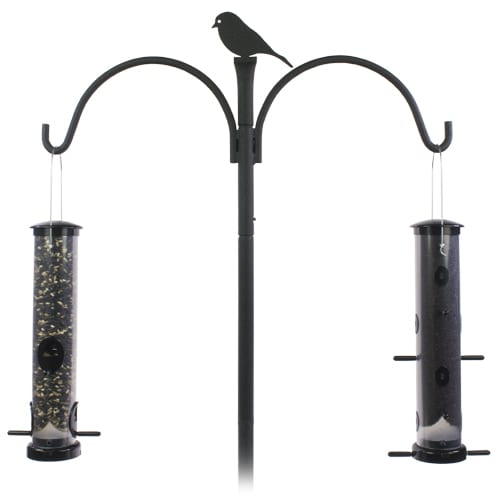
Our exclusive, patented Advanced Pole System® (APS) Basic Setup is the perfect beginning to your ultimate bird feeding and/or watering station designed to meet your own individual needs.
Just twist the 4-foot base pole into the ground using the convenient corkscrew auger. Next slide the Stabilizer onto the base pole and push into the ground (Tests show the stabilizer holds the pole straight in up to 35 MPH wind gusts). Add the extension pole and arms and top it with the decorative finial; then fill and hang your bird feeders.
Includes:
Also, be sure to shop through our other bird feeding supplies to complement all your bird feeding needs.
(Feeders and bird food not included.)
View Advanced Pole System Brochure
These birds are primarily migratory throughout their range. The Pine Warbler is year-round in the Southeastern US.
They will eat Bark Butter®, suet, mealworms, sunflower chips, and nectar.
They will nest in bush or tree and will not use a nest box.
Male and female plumage are similar, the female are paler with no seasonal plumage changes. Juvenile plumage similar to adult females.
Maps provided by Birds of North America Online.
Maintained by the Cornell Lab of Ornithology.